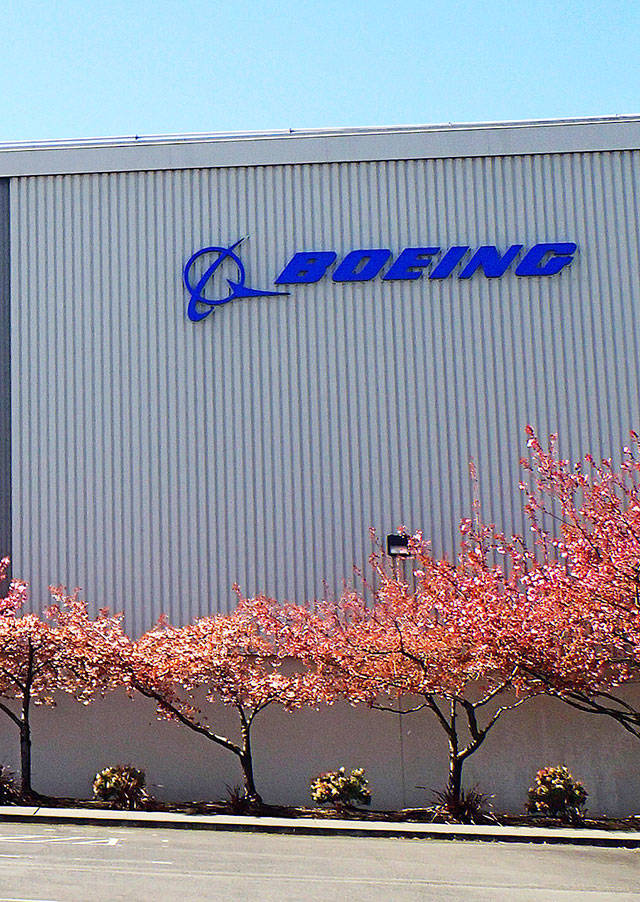Boeing continues to sample soil, groundwater, indoor air and water and sediment in its stormwater system at the Kent Space Center for contamination.
The company began tests in 2016 under a cleanup order from the state Department of Ecology, which is overseeing the remedial investigation to determine the type, location and concentrations of contamination on the site west of the West Valley Highway (68th Avenue South) and south of South 196th Street.
“Boeing will collect data starting fall 2019 through spring 2020 to support the remedial investigation,” said Boeing spokeswoman Holly Braithwaite in an email Oct. 14. “Groundwater sampling is conducted at seven existing monitoring wells on the property. Soil sampling was recently completed in an area where a building was recently demolished.”
Boeing submitted a draft of the remedial investigation report to Ecology in December 2017 and then additional information in 2018.
“We reviewed the draft report and additional information, and in November 2018 decided that more information was needed to understand where the different contaminants are found and their concentrations,” according to the Ecology website. “In 2019 Boeing has been submitting detailed plans, proposing the sampling they are going to do get that information. Some of the sampling has been performed this year. More is scheduled later this year and early next year.
“After Boeing completes the sampling in 2020 they will revise the remedial report and submit it for our review. We will then hold a public comment period so that the public has an opportunity to comment on the final report.”
Since the 1960s, Boeing has conducted research and development at the Kent facility, mostly for the U.S. Department of Defense. The company has also conducted aerospace-related operations, according to Ecology. These activities include: electronic and electrical component manufacturing, metal milling, finishing and plating, photographic processing and research and development in various laboratories. Chemicals used in those operations spilled and contaminated soil and groundwater.
Boeing also previously stored hazardous waste at the site long term (under a federal Environmental Protection Agency Resource Conservation and Recovery Act. Now, Boeing can only store hazardous waste for up to 90 days, according to Ecology.
Contaminants of concern
Contaminants have been detected in groundwater, soils, soil gas, stormwater, and/or surface water sediments. They include:
• Volatile organic compounds (VOCs) such as benzene and vinyl chloride
• Petroleum hydrocarbons
• Semi-volatile organic compounds ( “SVOCs”), including polycyclic aromatic hydrocarbons (or “PAHs”)
• PCBs
• Toxic metals
Sampling so far has shown levels of contamination less than the levels that pose a risk to human health.
“At this time, we do not believe that people are currently being exposed to harmful levels of contamination,” according to the Ecology website. “This is because groundwater at the site is not used for drinking water and Boeing controls public access to their property. If we discover that people are coming in contact with harmful levels, we will direct Boeing to quickly take protective actions. We will have a more complete picture of the types, concentrations, and locations of the contaminants when the remedial investigation is finished.”
That data from the remedial investigation will be used by Ecology to propose and evaluate cleanup alternatives, which could be a feasibility study and a cleanup action plan if needed.
Boeing is demolishing five buildings at its Kent site in preparation to sell about 50 acres to a developer. The remedial investigation has not affected those plans.
“As with all sampling activities, this effort was closely coordinated between Ecology and Boeing and has not impacted any demolition activities at the site,” said Braithwaite, of Boeing.
Talk to us
Please share your story tips by emailing editor@kentreporter.com.
To share your opinion for publication, submit a letter through our website https://www.kentreporter.com/submit-letter/. Include your name, address and daytime phone number. (We’ll only publish your name and hometown.) Please keep letters to 300 words or less.

